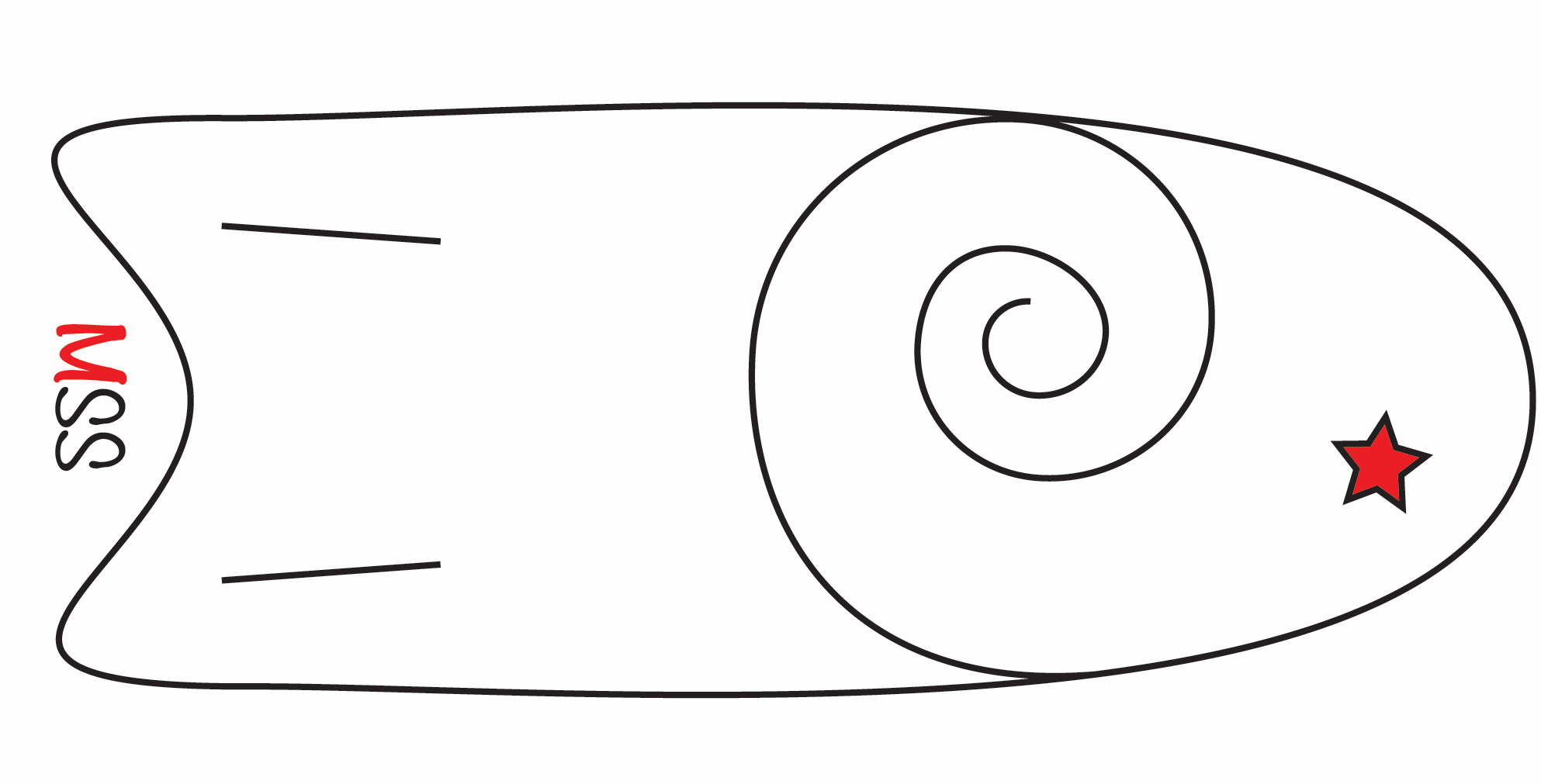This is a resource guide to understanding Mini Simmons fin placement. Before we get started on how and where to place your Mini Simmons fins let’s do a quick review of fin dynamics.

Basic fin placement characteristics that will influence your ride include the following:
- fin spread cluster
- fin distance from tail and rail
- fin tow (fin line pointing towards the stringer)
- fin cant (leaning away from the stringer)
Min Spread Cluster
A Mini Simmons in many ways goes against convention fin placement basics.
What does that mean?
Well, a spread out fin cluster will result in a longer turning arc—definitely a characteristic of most Mini Simmons surfboards. However, the spread out fin placement is traditionally used on longer boards and is made for waves with speed and power. This is why it’s sometimes difficult to snap a Mini off-the-top or made a quick mid face cutback.
In contrast a compacted fin cluster produces shorter turning arcs, you could try it on a Mini but I’ve never seen anyone do it, could be an interesting experiment.
*MSS Recommended Fin: two glass-on keel fins placed near to rail and tail
Fin Distance From Rail & Tail
Before we dive into fin distance you might want to check out my article on hulls and displacement designs.
A good place to start is to place your rear fin base one inch from the tail and one inch from the rail. The further back you place your fins the more drive you’ll get from the placement.
However, you are going to get lots of opinions on this one, but I like my Mini fins close to the tail (maybe 1/2 inch) and close to the rail (around 1 inch at the base).
A more forward fin setup will be looser and have a short turning radius. The further back you place the fins, the tighter the hold and the longer slopping turns you’ll be able to perform—think snowboard carving.
You’ll likely want to play with fin distance to tail and rail as you shape more boards, altering the fin cluster dimensions can really impact total design characteristics—which is the fun of surfboard shaping.
*MSS Recommended Measurement: 1′ off tail + 1′ off rail (rear fin base measurements)
Fin Tow
Fin tow is the percentage of tweak you give the fins off the 90 degree mark towards the stringer. The more tow you give, the looser a board feels in a turn. However, that tow comes at a cost because more tow equates to more drag while going down the line.
Think about it, if you have two straight lines (or fins) moving forward in the water there is very little resistance (aka speed). Add an angle to that straight line and the water flow is disrupted—until you engage a turn, that’s where you need that tow to divert your forward energy into a new direction.
So that being said you want to find a balance between straight line speed and angled redirection. Unless you plan on just going straight. If you are shaping a board for a beginner you don’t need to worry about dialing in the exact tow. But if you put in too much tow you’ll find it hard to turn a board and the increased drag will make it slog in the water. (Slog = slow hog).
I recommend just a tad of tow, just enough to make sure your turns are fluid but not too much that you’ll be dragging your ass down the line.
*MSS Recommended Measurement: 1/4 inch of tow or at place 85 degrees.
 Fin Cant
Fin Cant
The fin cant is the ‘lean’ of the fin off 90 degree center. More cant, leaning away from the stringer, will give a board less drive and projection out of turns and less cant offers the opposite.
Cant is the angle it makes in relation to the bottom of the surfboard. A fin that sticks straight up, perfectly perpendicular to the board’s base contour, is said to have a no cant.
Canted fins point outwards, toward the rails of the board. Increasing the fins’ cant leads to a more responsive board through turns, while decreasing the cant (bringing it closer to 90°) makes the board faster, especially when traveling in a straight line.
I wasn’t a big proponent of cant on a Mini until recently when I rode one with about 4 degrees of cant. That ‘canted’ board really performed well and was a blast to ride. You’ll have to make up for the cant with a little more volume to help compensate for the extra drag created by the more dynamic angles.
*MSS Recommended Measurement: 2-4 degrees







Hello Everyone,
You can see the World”s first, The Original Adjustable Wing Twin Fin. Here.
http://www.wavefin.com/wavefin/
That is correct you have seen it here first.
Thank you
WaveFin
Dude, that thing is sick!
Thanks for sharing.
~ Derek, MSS